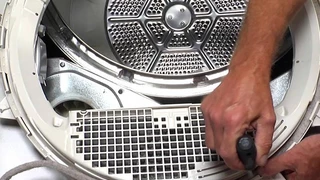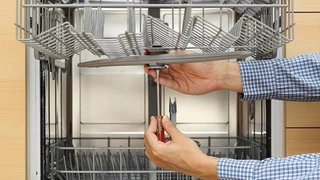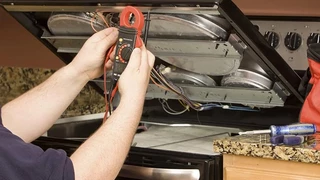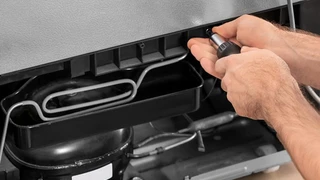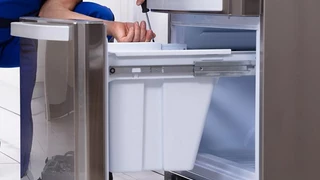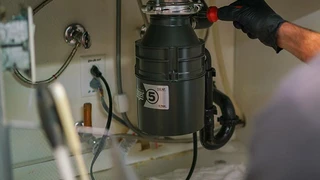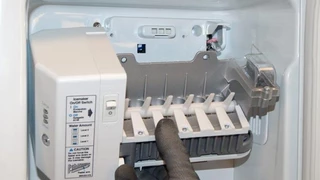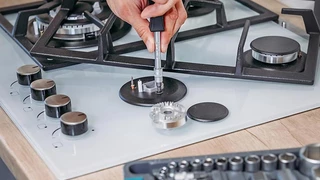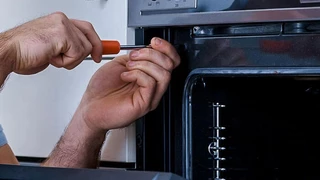Dryers are essential appliances for quickly drying clothes. However, they can experience issues that require troubleshooting and maintenance. Regular maintenance and timely repairs ensure longevity and safety. This article discusses common dryer issues, solutions, maintenance tips, and electrical and gas safety.
Understanding Your Dryer
A dryer consists of a drum, heating element, blower, and lint filter. Regular cleaning and maintenance of these components is important for optimal performance. For example, a clogged lint filter can restrict airflow and cause overheating, while a worn drum roller can cause noisy operation.
Common Dryer Issues and Solutions
Common dryer issues include noisy operation, overheating, error codes, non-heating, leaks, vibration and shaking, and startup issues.
- Noisy Operation: Unusual noises during operation can be caused by worn drum rollers or bearings, a damaged belt or idler pulley, or a loose blower wheel. Identify the source of the noise by listening while the dryer is running. Replace the worn or damaged part to fix the issue. For more information on diagnosing noisy dryer issues, see Diagnosing Noisy Dryer Issues: Solutions and Fixes.
- Overheating: Overheating can be caused by a clogged lint filter or vent. Clean the lint filter and vent thoroughly to restore proper airflow. For more information on preventing overheating in dryers, see Overheating Dryer Problems: Ensuring Fire Safety.
- Error Codes: Error codes can indicate a problem with a component. Refer to your dryer’s user manual or look up the error code online to determine its meaning. Replace or repair the affected component to fix the issue. For more information on decoding dryer error codes, see Decoding Dryer Error Codes: A Diagnostic Guide.
- Non-Heating: Non-heating can be caused by a blown thermal fuse, a faulty heating element, or a damaged thermostat. Use a multimeter to test these components for continuity. Replace any faulty components. For more information on solving non-heating dryer situations, see Solving Non-Heating Dryer Situations: Replacing the Heating Element.
- Leaks: Leaks can be caused by a damaged water inlet valve or a clogged condenser (for condenser dryers). Check for damage or wear on the water inlet valve and clean the condenser thoroughly. Replace a damaged or worn water inlet valve. For more information on fixing leaky dryers, see Fixing Leaky Dryers: Repairing Water Inlet Valves.
- Vibration and Shaking: Excessive vibration or shaking during operation can be caused by an unbalanced load or worn drum rollers. Ensure that your laundry load is evenly distributed in the drum and check for wear on the drum rollers. Replace worn drum rollers. For more information on combating dryer vibration and shaking, see Combating Dryer Vibration and Shaking: Practical Solutions.
- Startup Issues: Startup issues can be caused by a blown thermal fuse, a faulty door switch, or a damaged start switch. Use a multimeter to test these components for continuity. Replace any faulty components. For more information on troubleshooting dryer startup issues, see Troubleshooting Dryer Startup Issues: Door Switch Testing and Replacement.
Dryer Maintenance Tips
Regular maintenance is important for optimal dryer performance. Here are some tips for maintaining various parts of your dryer:
Electrical and Gas Safety
Electrical and gas safety are important considerations when it comes to dryers:
- Reducing Lint Ignition Risk: Clean the lint filter after every load and clean the ventilation system regularly to reduce lint ignition risk. For more information on reducing lint ignition risk, see Reducing Lint Ignition Risk: Cleaning and Safety Measures.
- Dealing with Electrical Glitches: Seek professional help from a qualified electrician if your dryer experiences electrical glitches such as tripping circuit breakers or blowing fuses. For more information on dealing with dryer electrical glitches, see Dealing with Dryer Electrical Glitches: Diagnosis and Repair.
- Managing Gas Ignition Problems: Seek professional help from a qualified gas technician if your gas dryer experiences ignition problems. For more information on managing gas ignition problems in dryers, see Managing Gas Ignition Problems in Dryers.
When to Consider Dryer Replacement
In some cases, it may be more economical to replace your dryer rather than repair it. Consider replacing your dryer if it is more than 10 years old, requires frequent repairs, or has decreased efficiency.
Regular maintenance and timely repairs are important for ensuring the longevity and safety of dryers. Follow the tips and advice in this article to keep your dryer running smoothly and avoid common issues. If you need professional repair services for your dryer in Chicago or its suburbs, contact us for assistance.
